John Deere Powertech 4.5L, Powertech 6.8L Service Manual
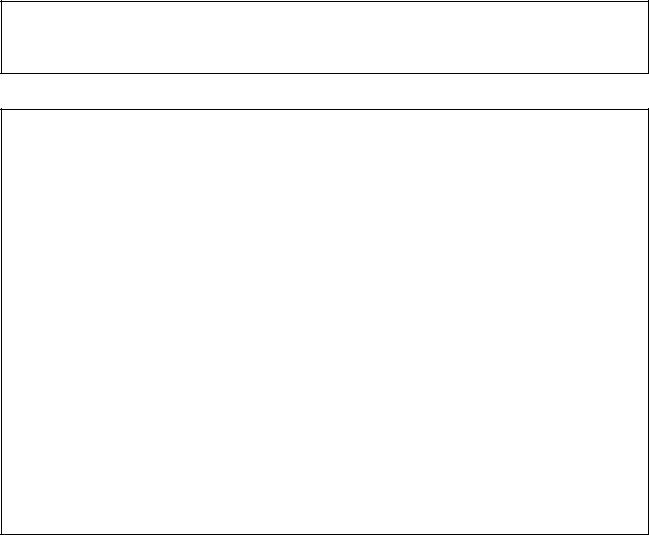
Workshop manual
John Deere Diesel engines Powertech 4.5L and 6.8L Level 11 Fuel systems with Denso HPCR
CTM 220 (21Jan04) |
|
33525067201_2_1 |
|
|
|
POWERTECH 4.5L & 6.8L
Diesel Engines
Level 11 Electronic
Fuel System With
Denso HPCR
TECHNICAL MANUAL
POWERTECH 4.5 L & 6.8 L Diesel
Engines—Level 11 Electronic Fuel
System with Denso HPCR
CTM220 21JAN04 (ENGLISH)
For complete service information also see:
POWERTECH 4.5 L and 6.8 L Diesel
Engines—Base Engine . . . . . . . . . . . . . . . . . CTM104
Alternators and Starter Motors . . . . . . . . . . . CTM77
OEM Engine Accessories . . . . . . CTM67 (English Only)
John Deere Power Systems
LITHO IN U.S.A.

Introduction
Forward
This manual is written for an experienced technician. Essential tools required in performing certain service work are identified in this manual and are recommended for use.
This manual (CTM220) covers only Level 11 Electronic Fuel System with the Denso High Pressure Common Rail (HPCR). It is one of six volumes on 4.5 L and 6.8 L engines. The following five companion manuals cover the base engine, mechanical fuel system, and other electronic control systems. Each manual covers repair, operation, and diagnostics.
•CTM104—Base Engine
•CTM170—Level 4 Electronic Fuel System with Bosch VP44 Pump
•CTM207—Mechanical Fuel Systems
•CTM284—Level 1 Electronic Fuel System with Delphi (Lucas) DP201 Pump
•CTM331—Level 12 Electronic Fuel System with Stanadyne DE 10 Pump
Other manuals will be added in the future to provide additional information on electronic fuel systems as needed.
A complete set of all these manuals covering 4.5 L and 6.8 L engines is available in a binder by ordering CTM 350 Binder Set.
Live with safety: Read the safety messages in the introduction of this manual and the cautions presented throughout the text of the manual.
 This is the safety-alert symbol. When you see this symbol on the machine or in this manual, be alert to the potential for personal injury.
This is the safety-alert symbol. When you see this symbol on the machine or in this manual, be alert to the potential for personal injury.
Use this component technical manual in conjunction with the machine technical manual. An application
listing in Section 01, Group 001 identifies product-model/component type-model relationship. See the machine technical manual for information on component removal and installation, and gaining access to the components.
Information is organized in sections and groups for the various components requiring service instruction. At the beginning of each group are summaries of the up coming group.
Before beginning repair on an engine, clean the engine.
This manual contains SI Metric units of measure followed immediately by the U.S. customary units of measure. Most hardware on these engines are metric sized.
Some components of this engine may be serviced without removing the engine from the machine. Refer to the specific machine technical manual for information on components that can be serviced without removing the engine from the machine and for engine removal and installation procedures.
Read each block of material completely before performing service to check for differences in procedures or specifications. Follow only the procedures that apply to the engine model number you are working on. If only one procedure is given, that procedure applies to all the engines in the manual.
CALIFORNIA PROPOSITION 65 WARNING: Diesel engine exhaust and some of its constituents are known to the State of California to cause cancer, birth defects, and other reproductive harm.
|
RG40854,0000001 –19–10APR02–1/1 |
CTM220 (21JAN04) |
4.5 L & 6.8 L Level 11 Electronic Fuel System |
|
012104 |
PN=2
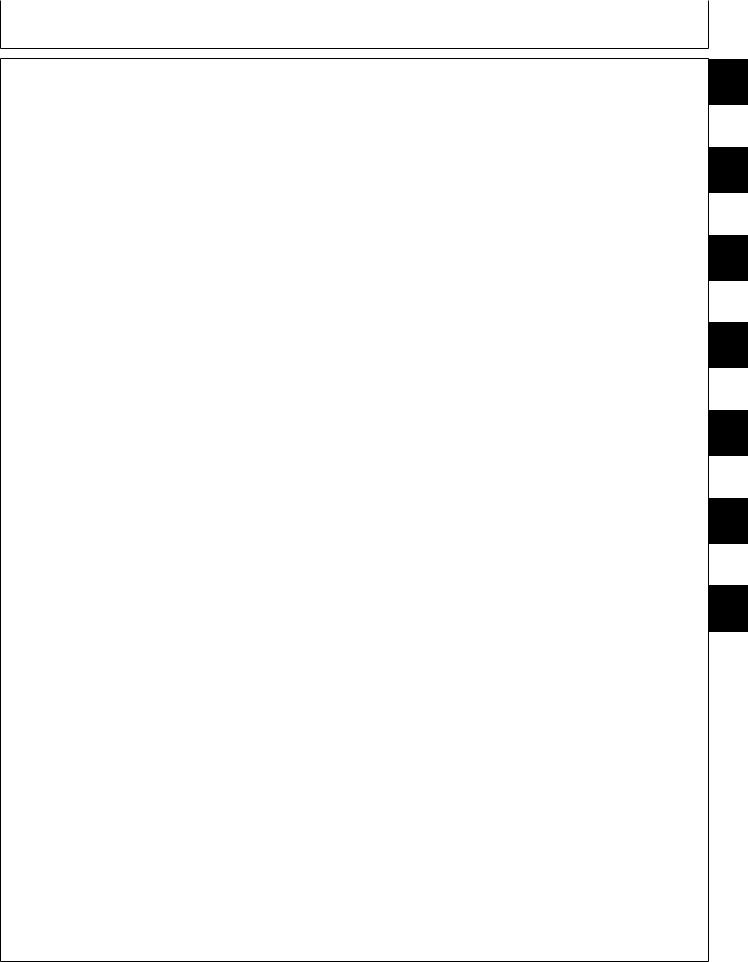
Contents
SECTION 01—General
Group 000—Safety
Group 001—Engine Identification
Group 002—Fuels, Lubricants, and Coolant
SECTION 02—Repair and Adjustments
Group 090—Electronic Fuel System Repair and
Adjustments
Group 110—Electronic Engine Control Repair and
Adjustment
SECTION 03—Theory Of Operation
Group 130—Electronic Fuel System Operation
Group 140—Electronic Control System Operation
SECTION 04—Diagnostics
Group 150—Observable Diagnostics and Tests
Group 160—Trouble Code Diagnostics and Tests
SECTION 05—Tools
Group 170—Electronic Fuel/Control System Repair
Tools and Other Materials
Group 180—Diagnostic Service Tools
SECTION 06—Specifications
Group 200—Repair Specifications
Group 210—Diagnostic Specifications
All information, illustrations and specifications in this manual are based on the latest information available at the time of publication. The right is reserved to make changes at any time without notice.
COPYRIGHT 2002
DEERE & COMPANY
Moline, Illinois
All rights reserved
A John Deere ILLUSTRUCTION Manual
01
02
03
04
05
06
INDX
CTM220 (21JAN04) |
i |
4.5 L & 6.8 L Level 11 Electronic Fuel System
012104
PN=1
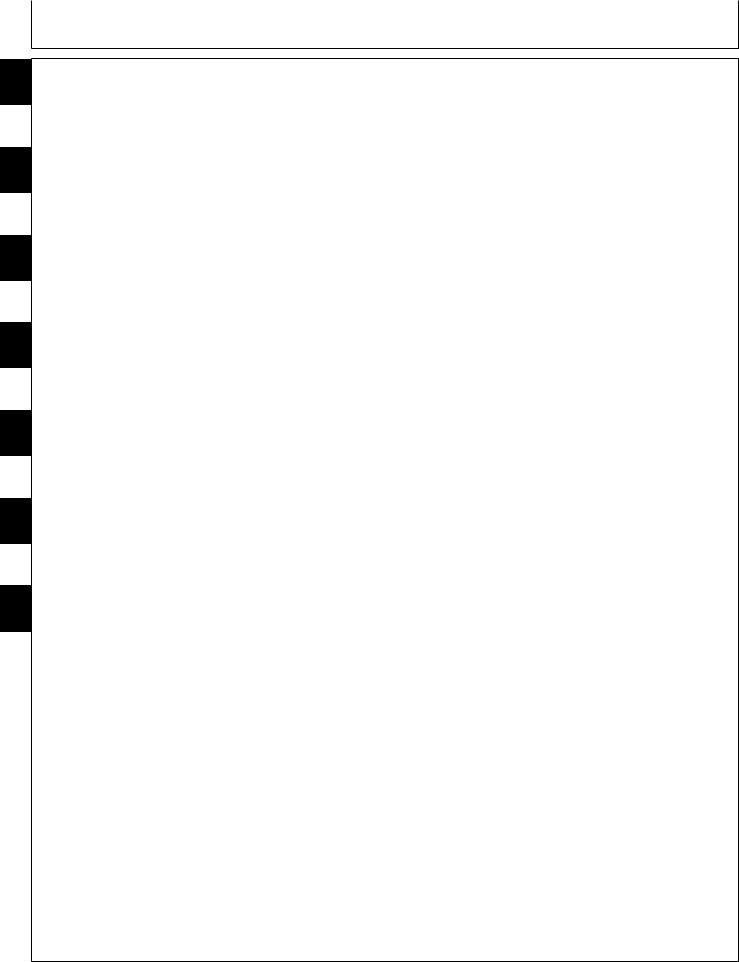
Contents
01
02
03
04
05
06
INDX
CTM220 (21JAN04) |
ii |
4.5 L & 6.8 L Level 11 Electronic Fuel System
012104
PN=2
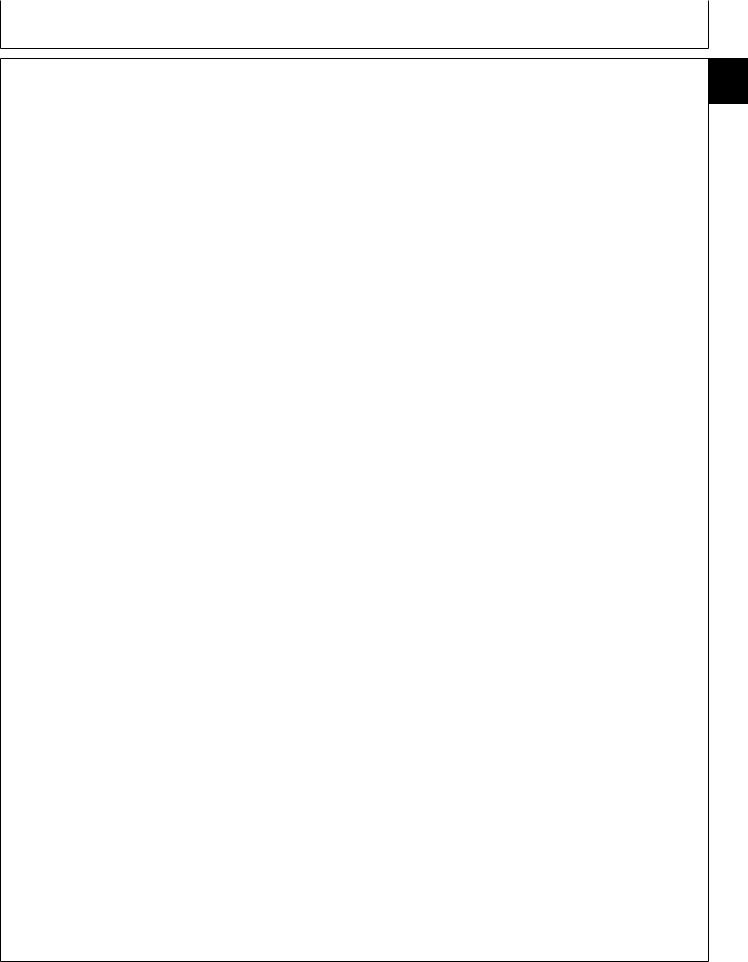
01
Section 01
General
Contents
Page
Group 000—Safety . . . . . . . . . . . . . . . . . . . .01-000-1
Group 001—Engine Identification
Engine Model Designation. . . . . . . . . . . . . . . .01-001-1
Engine Serial Number Plate Information . . . . .01-001-2
OEM Engine Option Code Label . . . . . . . . . . .01-001-3
Information Relative to Emissions
Regulations . . . . . . . . . . . . . . . . . . . . . . . . .01-001-3
Engine Application Charts . . . . . . . . . . . . . . . .01-001-4
Group 002—Fuels, Lubricants, and Coolant
Lubricants and Coolant . . . . . . . . . . . . . . . . . .01-002-1
Diesel Fuel . . . . . . . . . . . . . . . . . . . . . . . . . . .01-002-1
Bio-Diesel Fuel . . . . . . . . . . . . . . . . . . . . . . . .01-002-2
Dieselscan Fuel Analysis. . . . . . . . . . . . . . . . .01-002-2
Lubricity of Diesel Fuel . . . . . . . . . . . . . . . . . .01-002-3
CTM220 (21JAN04) |
01-1 |
4.5 L & 6.8 L Level 11 Electronic Fuel System |
|
|
012104 |
PN=1
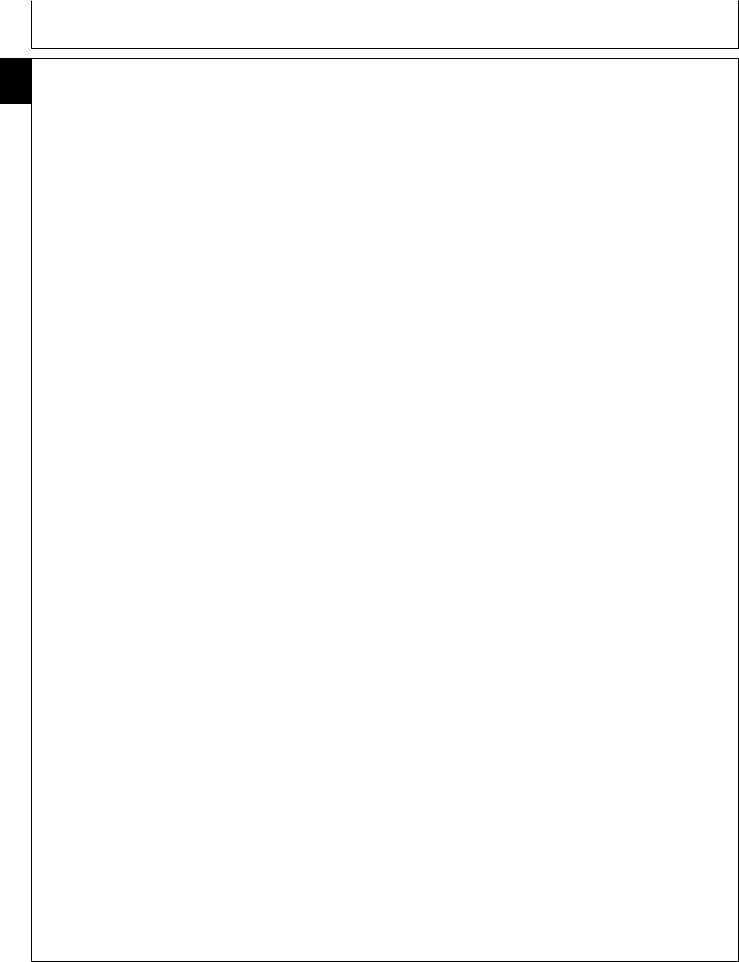
Contents
01
CTM220 (21JAN04) |
01-2 |
4.5 L & 6.8 L Level 11 Electronic Fuel System |
|
|
012104 |
PN=2
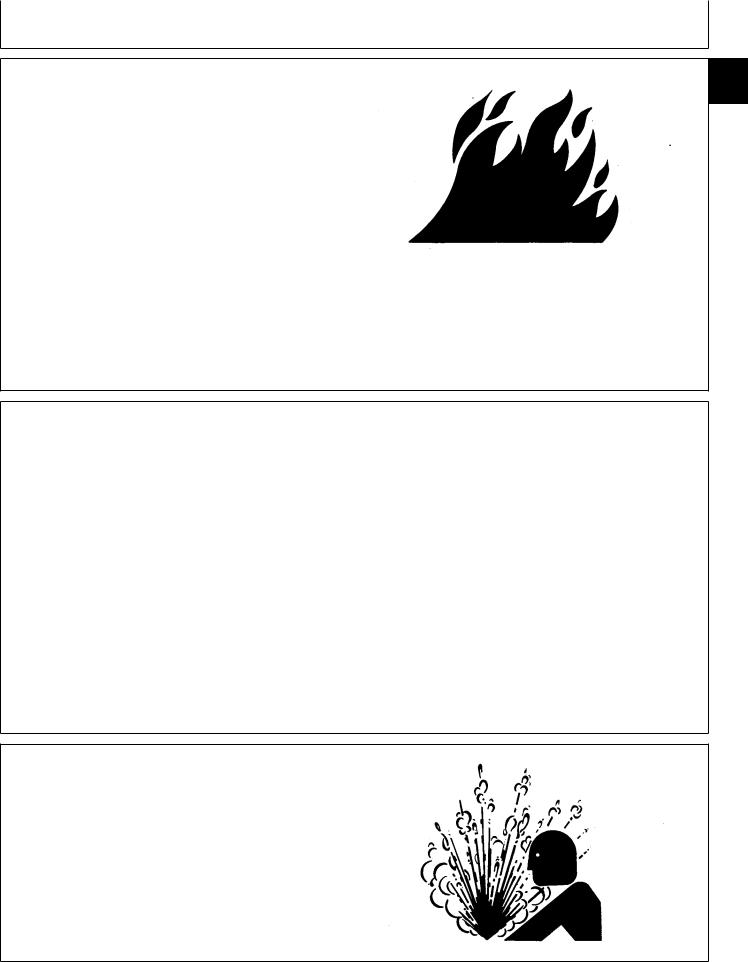
Handle Fluids Safely—Avoid Fires
When you work around fuel, do not smoke or work near heaters or other fire hazards.
Store flammable fluids away from fire hazards. Do not incinerate or puncture pressurized containers.
Make sure machine is clean of trash, grease, and debris.
Do not store oily rags; they can ignite and burn spontaneously.
Group 000
Safety
01
000
1
TS227 –UN–23AUG88
DX,FLAME –19–29SEP98–1/1
Handle Starting Fluid Safely
Starting fluid is highly flammable.
Keep all sparks and flame away when using it. Keep starting fluid away from batteries and cables.
To prevent accidental discharge when storing the pressurized can, keep the cap on the container, and store in a cool, protected location.
Do not incinerate or puncture a starting fluid container.
 TS1356 –UN–18MAR92
TS1356 –UN–18MAR92
Service Cooling System Safely
Explosive release of fluids from pressurized cooling system can cause serious burns.
Shut off engine. Only remove filler cap when cool enough to touch with bare hands. Slowly loosen cap to first stop to relieve pressure before removing completely.
CTM220 (21JAN04) |
01-000-1 |
DX,FIRE3 –19–16APR92–1/1
–UN–23AUG88 TS281 DX,RCAP –19–04JUN90–1/1
4.5 L & 6.8 L Level 11 Electronic Fuel System
012104
PN=7
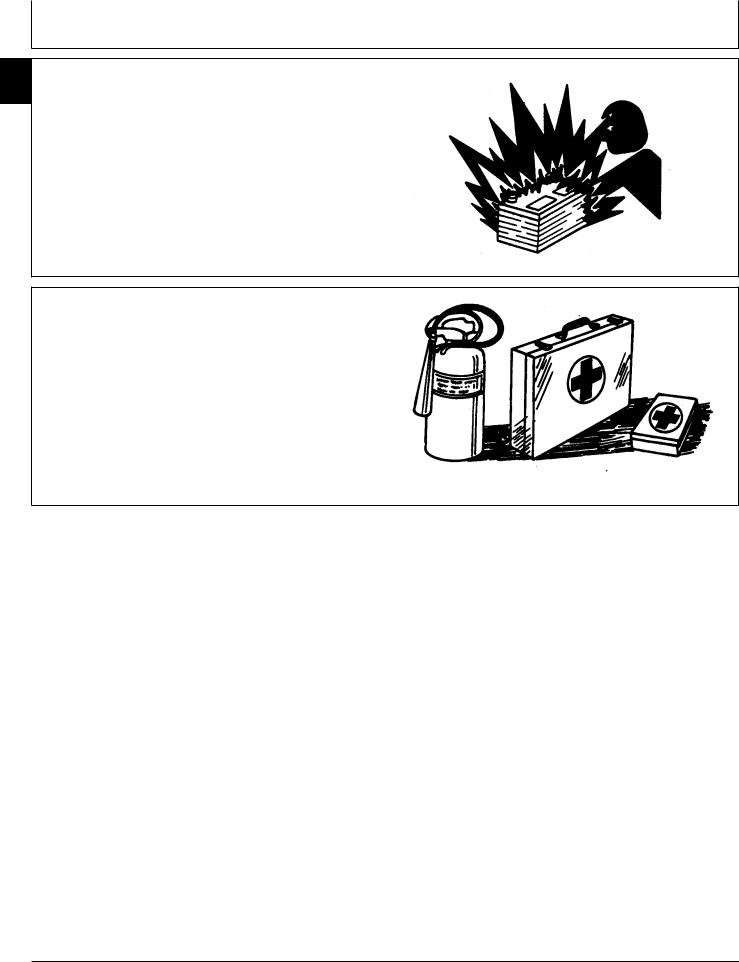
Safety
01
000 Prevent Battery Explosions
2
Keep sparks, lighted matches, and open flame away from the top of battery. Battery gas can explode.
Never check battery charge by placing a metal object across the posts. Use a volt-meter or hydrometer.
Do not charge a frozen battery; it may explode. Warm battery to 16°C (60°F).
Prepare for Emergencies
Be prepared if a fire starts.
Keep a first aid kit and fire extinguisher handy.
Keep emergency numbers for doctors, ambulance service, hospital, and fire department near your telephone.
–UN–23AUG88 TS204 DX,SPARKS –19–03MAR93–1/1
–UN–23AUG88 TS291 DX,FIRE2 –19–03MAR93–1/1
CTM220 (21JAN04) |
01-000-2 |
4.5 L & 6.8 L Level 11 Electronic Fuel System |
|
|
012104 |
PN=8
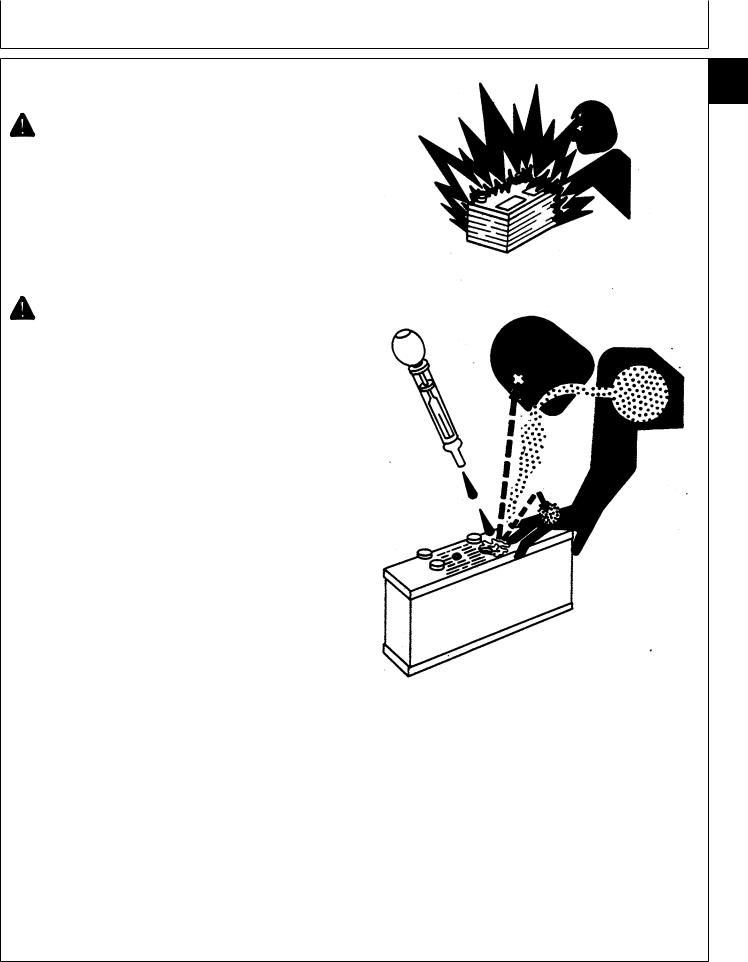
Safety
Handling Batteries Safely
CAUTION: Battery gas can explode. Keep sparks and flames away from batteries. Use a flashlight to check battery electrolyte level.
Never check battery charge by placing a metal object across the posts. Use a voltmeter or hydrometer.
Always remove grounded (-) battery clamp first and replace it last.
CAUTION: Sulfuric acid in battery electrolyte is poisonous. It is strong enough to burn skin, eat holes in clothing, and cause blindness if splashed into eyes.
Avoid the hazard by:
1.Filling batteries in a well-ventilated area.
2.Wearing eye protection and rubber gloves.
3.Avoiding breathing fumes when electrolyte is added.
4.Avoiding spilling or dripping electrolyte.
5.Use proper jump start procedure.
If you spill acid on yourself:
1.Flush your skin with water.
2.Apply baking soda or lime to help neutralize the acid.
3.Flush your eyes with water for 15—30 minutes. Get medical attention immediately.
If acid is swallowed:
1.Do not induce vomiting.
2.Drink large amounts of water or milk, but do not exceed 2 L (2 quarts).
3.Get medical attention immediately.
WARNING: Battery posts, terminals, and related accessories contain lead and lead compounds, chemicals known to the State of California to cause cancer and reproductive harm. Wash hands after handling.
CTM220 (21JAN04) |
01-000-3 |
01
000
3
TS204 –UN–23AUG88
TS203 –UN–23AUG88
DPSG,OUO1004,2758 –19–11MAY00–1/1
4.5 L & 6.8 L Level 11 Electronic Fuel System
012104
PN=9
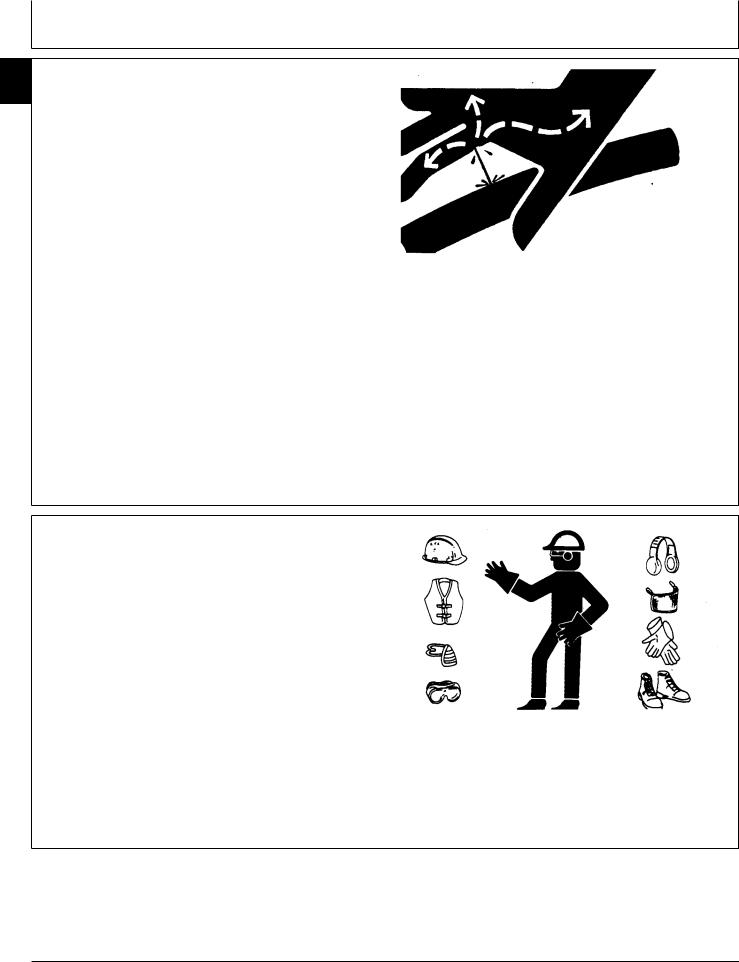
Safety
01
000 Avoid High-Pressure Fluids
4
Escaping fluid under pressure can penetrate the skin causing serious injury.
Avoid the hazard by relieving pressure before disconnecting hydraulic or other lines. Tighten all connections before applying pressure.
Search for leaks with a piece of cardboard. Protect hands and body from high pressure fluids.
If an accident occurs, see a doctor immediately. Any fluid injected into the skin must be surgically removed within a few hours or gangrene may result. Doctors unfamiliar with this type of injury should reference a knowledgeable medical source. Such information is available from Deere & Company Medical Department in Moline, Illinois, U.S.A.
Wear Protective Clothing
Wear close fitting clothing and safety equipment appropriate to the job.
Prolonged exposure to loud noise can cause impairment or loss of hearing.
Wear a suitable hearing protective device such as earmuffs or earplugs to protect against objectionable or uncomfortable loud noises.
Operating equipment safely requires the full attention of the operator. Do not wear radio or music headphones while operating machine.
CTM220 (21JAN04) |
01-000-4 |
X9811 –UN–23AUG88
DX,FLUID –19–03MAR93–1/1
TS206 –UN–23AUG88
DX,WEAR –19–10SEP90–1/1
4.5 L & 6.8 L Level 11 Electronic Fuel System
012104
PN=10
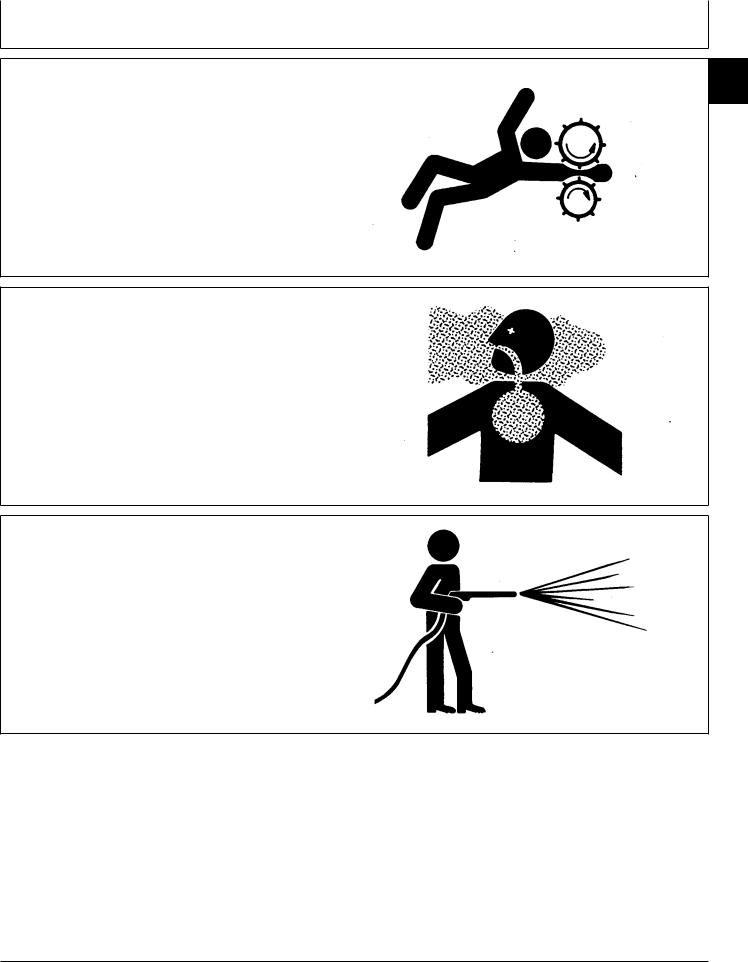
Safety
Service Machines Safely
Tie long hair behind your head. Do not wear a necktie, scarf, loose clothing, or necklace when you work near machine tools or moving parts. If these items were to get caught, severe injury could result.
Remove rings and other jewelry to prevent electrical shorts and entanglement in moving parts.
Work In Ventilated Area
Engine exhaust fumes can cause sickness or death. If it is necessary to run an engine in an enclosed area, remove the exhaust fumes from the area with an exhaust pipe extension.
If you do not have an exhaust pipe extension, open the doors and get outside air into the area
Work in Clean Area
Before starting a job:
•Clean work area and machine.
•Make sure you have all necessary tools to do your job.
•Have the right parts on hand.
•Read all instructions thoroughly; do not attempt shortcuts.
01
000
5
–UN–23AUG88 TS228 DX,LOOSE –19–04JUN90–1/1
–UN–23AUG88 TS220 DX,AIR –19–17FEB99–1/1
–UN–18OCT88 T6642EJ DX,CLEAN –19–04JUN90–1/1
CTM220 (21JAN04) |
01-000-5 |
4.5 L & 6.8 L Level 11 Electronic Fuel System |
|
|
012104 |
PN=11
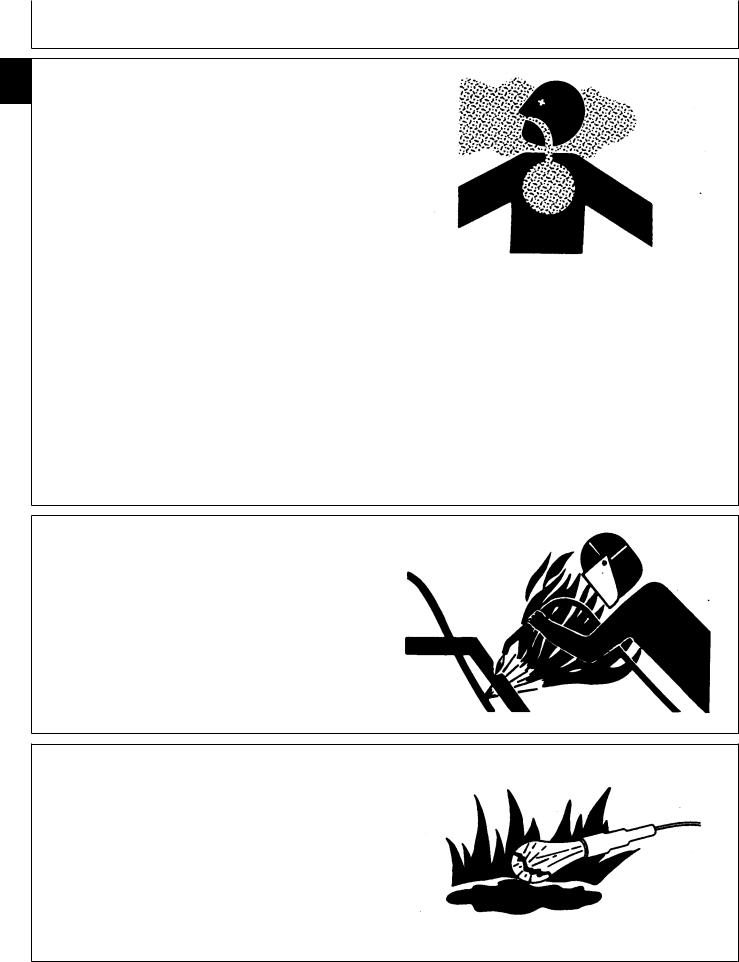
Safety
01
000 Remove Paint Before Welding or Heating
6
Avoid potentially toxic fumes and dust.
Hazardous fumes can be generated when paint is heated by welding, soldering, or using a torch.
Remove paint before heating:
•Remove paint a minimum of 76 mm (3 in.) from area to be affected by heating.
•If you sand or grind paint, avoid breathing the dust. Wear an approved respirator.
•If you use solvent or paint stripper, remove stripper with soap and water before welding. Remove solvent or paint stripper containers and other flammable material from area. Allow fumes to disperse at least 15 minutes before welding or heating.
Do all work in an area that is ventilated to carry toxic fumes and dust away.
Dispose of paint and solvent properly.
Avoid Heating Near Pressurized Fluid Lines
Flammable spray can be generated by heating near pressurized fluid lines, resulting in severe burns to yourself and bystanders. Do not heat by welding, soldering, or using a torch near pressurized fluid lines or other flammable materials. Pressurized lines can be accidentally cut when heat goes beyond the immediate flame area.
Illuminate Work Area Safely
Illuminate your work area adequately but safely. Use a portable safety light for working inside or under the machine. Make sure the bulb is enclosed by a wire cage. The hot filament of an accidentally broken bulb can ignite spilled fuel or oil.
CTM220 (21JAN04) |
01-000-6 |
TS220 –UN–23AUG88
DX,PAINT –19–22OCT99–1/1
–UN–15MAY90 TS953 DX,TORCH –19–03MAR93–1/1
–UN–23AUG88 TS223 DX,LIGHT –19–04JUN90–1/1
4.5 L & 6.8 L Level 11 Electronic Fuel System
012104
PN=12
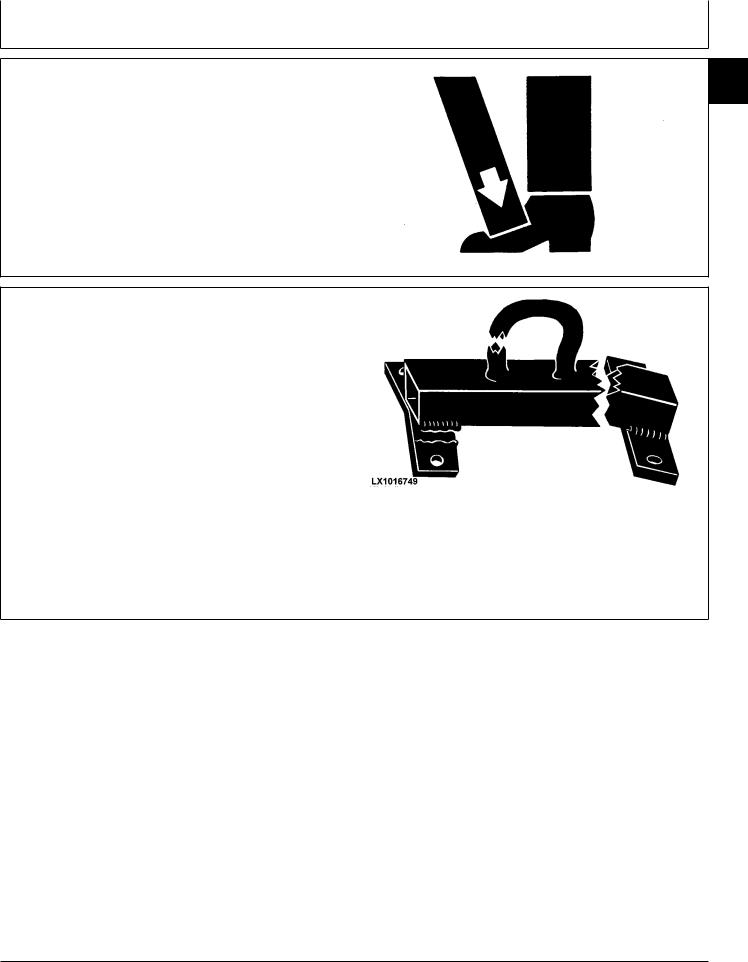
Safety
Use Proper Lifting Equipment
Lifting heavy components incorrectly can cause severe injury or machine damage.
Follow recommended procedure for removal and installation of components in the manual.
Construct Dealer-Made Tools Safely
Faulty or broken tools can result in serious injury. When constructing tools, use proper, quality materials and good workmanship.
Do not weld tools unless you have the proper equipment and experience to perform the job.
CTM220 (21JAN04) |
01-000-7 |
01
000
7
–UN–23AUG88 TS226 DX,LIFT –19–04JUN90–1/1
LX1016749 –UN–01JUL97
Construct Dealer-Made Tools Safely
DPSG,OUO1004,899 –19–19MAY99–1/1
4.5 L & 6.8 L Level 11 Electronic Fuel System
012104
PN=13

Safety
01
000 Practice Safe Maintenance
8
Understand service procedure before doing work. Keep area clean and dry.
Never lubricate, service, or adjust machine while it is moving. Keep hands, feet , and clothing from power-driven parts. Disengage all power and operate controls to relieve pressure. Lower equipment to the ground. Stop the engine. Remove the key. Allow machine to cool.
Securely support any machine elements that must be raised for service work.
Keep all parts in good condition and properly installed. Fix damage immediately. Replace worn or broken parts. Remove any buildup of grease, oil, or debris.
On self-propelled equipment, disconnect battery ground cable (-) before making adjustments on electrical systems or welding on machine.
On towed implements, disconnect wiring harnesses from tractor before servicing electrical system components or welding on machine.
Use Proper Tools
Use tools appropriate to the work. Makeshift tools and procedures can create safety hazards.
Use power tools only to loosen threaded parts and fasteners.
For loosening and tightening hardware, use the correct size tools. DO NOT use U.S. measurement tools on metric fasteners. Avoid bodily injury caused by slipping wrenches.
Use only service parts meeting John Deere specifications.
CTM220 (21JAN04) |
01-000-8 |
TS218 –UN–23AUG88
DX,SERV –19–17FEB99–1/1
TS779 –UN–08NOV89
DX,REPAIR –19–17FEB99–1/1
4.5 L & 6.8 L Level 11 Electronic Fuel System
012104
PN=14

Safety
Dispose of Waste Properly
Improperly disposing of waste can threaten the environment and ecology. Potentially harmful waste used with John Deere equipment include such items as oil, fuel, coolant, brake fluid, filters, and batteries.
Use leakproof containers when draining fluids. Do not use food or beverage containers that may mislead someone into drinking from them.
Do not pour waste onto the ground, down a drain, or into any water source.
Air conditioning refrigerants escaping into the air can damage the Earth’s atmosphere. Government regulations may require a certified air conditioning service center to recover and recycle used air conditioning refrigerants.
Inquire on the proper way to recycle or dispose of waste from your local environmental or recycling center, or from your John Deere dealer.
Live With Safety
Before returning machine to customer, make sure machine is functioning properly, especially the safety systems. Install all guards and shields.
CTM220 (21JAN04) |
01-000-9 |
01
000
9
TS1133 –UN–26NOV90
DX,DRAIN –19–03MAR93–1/1
–19–07OCT88 TS231 DX,LIVE –19–25SEP92–1/1
4.5 L & 6.8 L Level 11 Electronic Fuel System
012104
PN=15
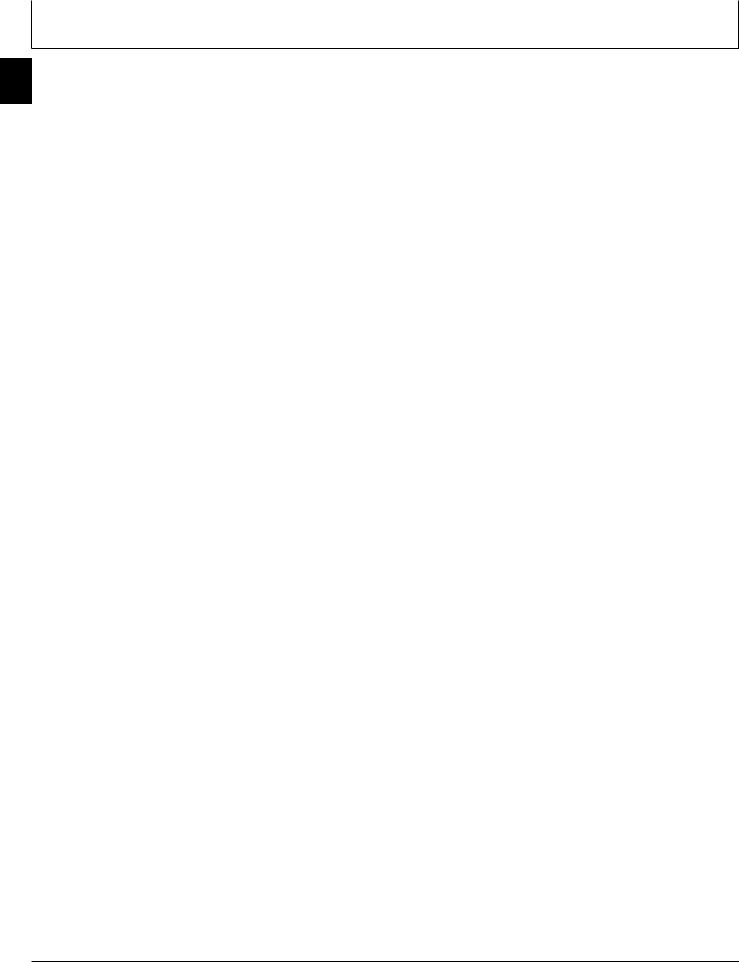
Safety
01
000
10
CTM220 (21JAN04) |
01-000-10 |
4.5 L & 6.8 L Level 11 Electronic Fuel System |
|
|
012104 |
PN=16
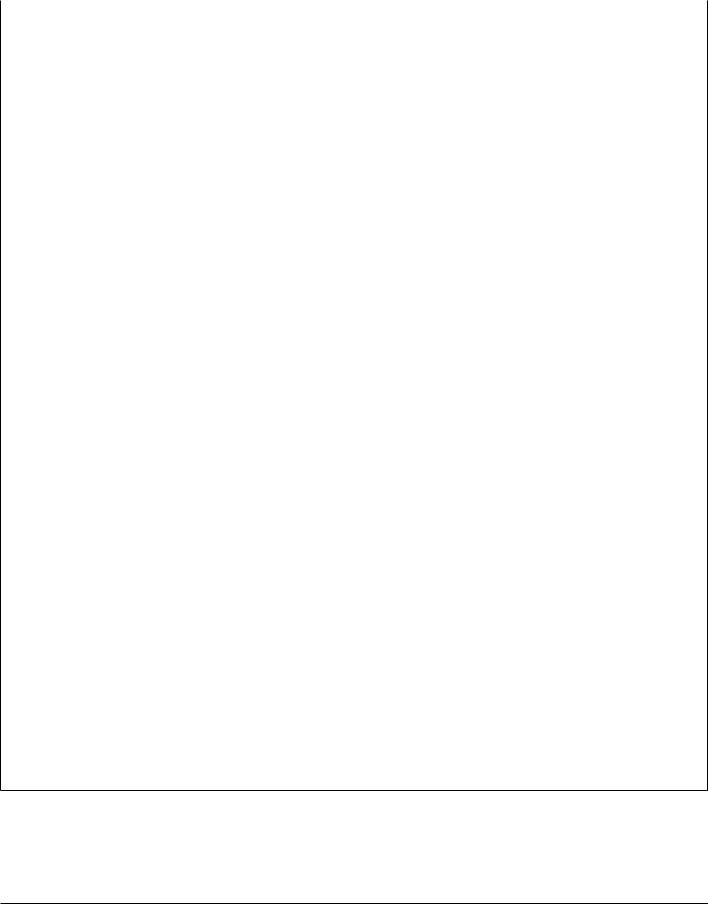
|
Group 001 |
|
|
Engine Identification |
|
|
|
|
|
|
|
Engine Model Designation |
|
01 |
|
001 |
|
|
|
1 |
|
|
|
John Deere Engine Model—4045 and 6068 Engines |
||
John Deere engine model designation includes number of |
||
cylinders, displacement in liters, aspiration, user code, and |
||
application code. For example: |
|
|
4045TF275 Engine |
|
|
4 ................................................................ |
Number of cylinders |
|
4.5 ............................................................. |
Liter displacement |
|
T ............................................................... |
Aspiration code |
|
F ............................................................... |
User code |
|
275 ............................................................ |
POWERTECH application code |
|
Aspiration Code |
|
|
D ............................................................... |
Naturally aspirated |
|
T ............................................................... |
Turbocharged, no aftercooling |
|
A ............................................................... |
Turbocharged and Air-to-Coolant Aftercooled |
|
H ............................................................... |
Turbocharged and Air-to-Air Aftercooled |
|
User Factory Code |
|
|
AT ............................................................. |
Agritalia srl (Vittoria, Sicily, Italy) |
|
CQ ............................................................ |
John Deere Brazil (Horizontina, Brazil) |
|
DW ............................................................ |
John Deere Davenport Works (Davenport, Iowa) |
|
E ............................................................... |
John Deere Ottumwa Works (Ottumwa, Iowa) |
|
F ............................................................... |
OEM (Outside Equipment Manufacturers) |
|
FF ............................................................. |
Deere-Hitachi (Kernersville, North Carolina) |
|
FG ............................................................. |
Goldoni S.P.A. (Modena, Italy) |
|
FM ............................................................ |
Marine Engines |
|
H ............................................................... |
John Deere Harvester Works (East Moline, Illinois) |
|
KV ............................................................. |
John Deere Commercial Worksite Products (Knoxville, Tennessee) |
|
L ................................................................ |
John Deere Werke Mannheim (Germany) |
|
LA ............................................................. |
John Deere Werke Mannheim (Germany) (Engines with Bosch VP44 Injection Pump) |
|
LV ............................................................. |
John Deere Commercial Products (Augusta, Georgia) |
|
N ............................................................... |
John Deere Des Moines Works (Des Moines, Iowa) |
|
P ............................................................... |
Industrias John Deere Mexico S.A. de C.V. (Saltillo/Monterrey, Mexico) |
|
PY ............................................................. |
Larson & Toubro Ltd. (Pune, India) |
|
RW ............................................................ |
John Deere Waterloo Tractor Works (Waterloo, Iowa) |
|
T ............................................................... |
John Deere Dubuque Works (Dubuque, Iowa) |
|
T8 ............................................................. |
Cameco Industries (Thibodaux, Louisiana) |
|
TJ .............................................................. |
Timberjack (Deere) (Sweden/Finland/Canada) |
|
YC ............................................................. |
John Deere Jialian Harvester Co. Limited (China) |
|
Z ............................................................... |
John Deere WERKE Zweibrucken (Germany) |
|
Application Code |
|
|
001, etc. .................................................... |
See ENGINE APPLICATION CHARTS, later in this Group |
|
POWERTECH is a registered trademark of Deere & Company |
RG40854,0000004 –19–10APR02–1/1 |
CTM220 (21JAN04) |
01-001-1 |
4.5 L & 6.8 L Level 11 Electronic Fuel System |
|
|
012104 |
PN=17
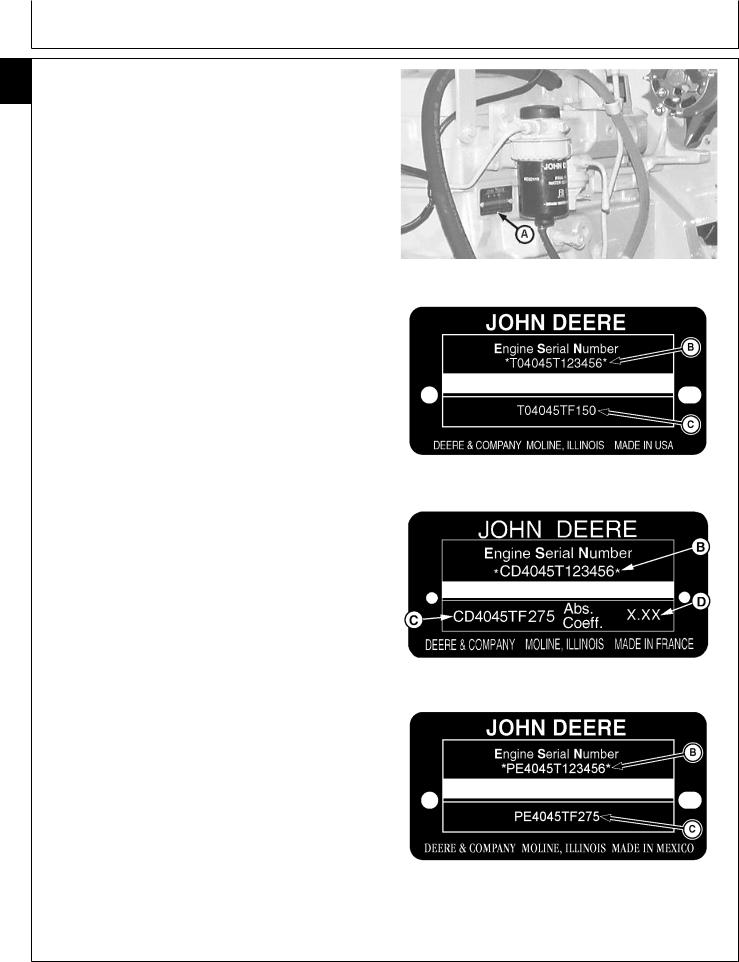
Engine Identification
01
001 Engine Serial Number Plate Information
2
IMPORTANT: The engine serial number plate (A) can be easily destroyed. Before “hot tank” cleaning the block, remove the plate.
Engine Serial Number (B)
Each engine has a 13-digit John Deere engine serial number identifying the producing factory, engine model designation, and a 6-digit sequential number. The following is an example:
CD4045T000000 |
|
CD .......................... |
Factory producing engine |
4045T ..................... |
Engine model designation |
000000 ................... |
Sequential serial number |
Factory Code (Engine Manufacturer) |
|
T0 ........................... |
Dubuque, Iowa |
CD .......................... |
Saran, France |
PE .......................... |
Torreon, Mexico |
J0 ........................... |
Rosario, Argentina |
Engine Model Designation |
|
4045T ..................... |
Definition explained previously. See ENGINE |
|
MODEL DESIGNATION earlier in this group. |
Sequential Number |
|
000000 ................... |
6-digit sequential serial number |
Engine Application Data (C)
The second line of information on the serial number plate identifies the engine/machine or OEM relationship. See ENGINE APPLICATION CHARTS later in this group.
Coefficient of Absorption (D) — (Saran-Built Engines
Only)
The second line of information on the Saran serial number plate also contains the coefficient of absorption value for smoke emissions.
A—Engine Serial Number Plate
B—Engine Serial Number
C—Engine Application Data
D—Coefficient of Absorption (Saran Engines Only)
CTM220 (21JAN04) |
01-001-2 |
RG11816 –UN–15NOV01
Engine Serial Number Plate
RG9060 –UN–16MAR98
Dubuque Engine Serial Number Plate
RG11949 –UN–07NOV01
Saran Engine Serial Number Plate
RG11948 –UN–06NOV01
Torreon Engine Serial Number Plate
RG40854,0000005 –19–10APR02–1/1
4.5 L & 6.8 L Level 11 Electronic Fuel System
012104
PN=18
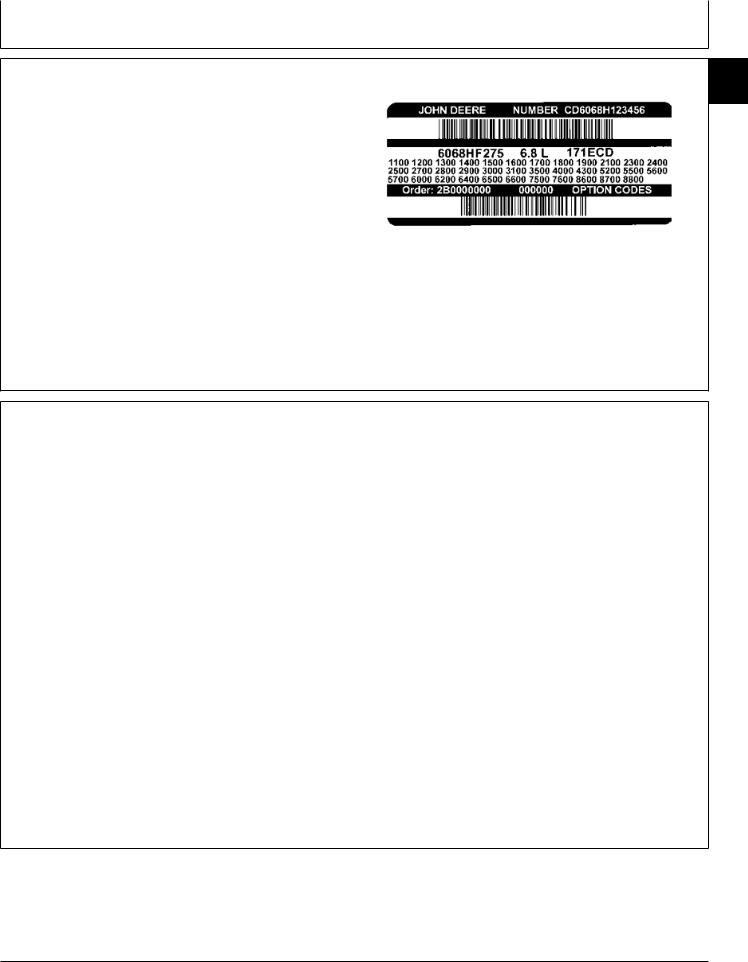
Engine Identification
OEM Engine Option Code Label
An option code label is secured to the top of the valve cover and identifies the factory installed options on each OEM engine to ensure correct parts acquisition.
Always provide option code information and engine base code when ordering repair parts. A listing of option codes is given in parts catalogs and operator’s manuals.
NOTE: Before “hot tank” cleaning, ensure that option codes are recorded elsewhere.
01
001
3
RG12027 –UN–03DEC01
RG40854,0000006 –19–10APR02–1/1
Information Relative to Emissions Regulations
Depending on the final destination, engines can meet the emissions regulations according to the US Environmental Protection Agency (EPA), California Air Resources Board (CARB) and for Europe, the Directive 97/68/EC relating the measures against the emissions of particles and gaseous pollutant from internal combustion engines. Such engines are called “CERTIFIED” and receive an emission label stuck on the engine.
The regulations prohibit tampering with the emission-related components listed below which would render that component inoperative or to make any adjustment on the engine beyond published specifications. It is also illegal to install a part or
component where the principle effect of that component is to bypass, defeat, or render inoperative any engine component or device which would affect the engine’s conformance to the emission regulations.
To summarize, it is illegal to do anything except return the engine to its original published specifications.
List of emission-related components:
•Fuel injection system
•Intake manifold
•Turbocharger
•Charge air cooling system
•Piston
RG40854,0000007 –19–10APR02–1/1
CTM220 (21JAN04) |
01-001-3 |
4.5 L & 6.8 L Level 11 Electronic Fuel System |
|
|
012104 |
PN=19
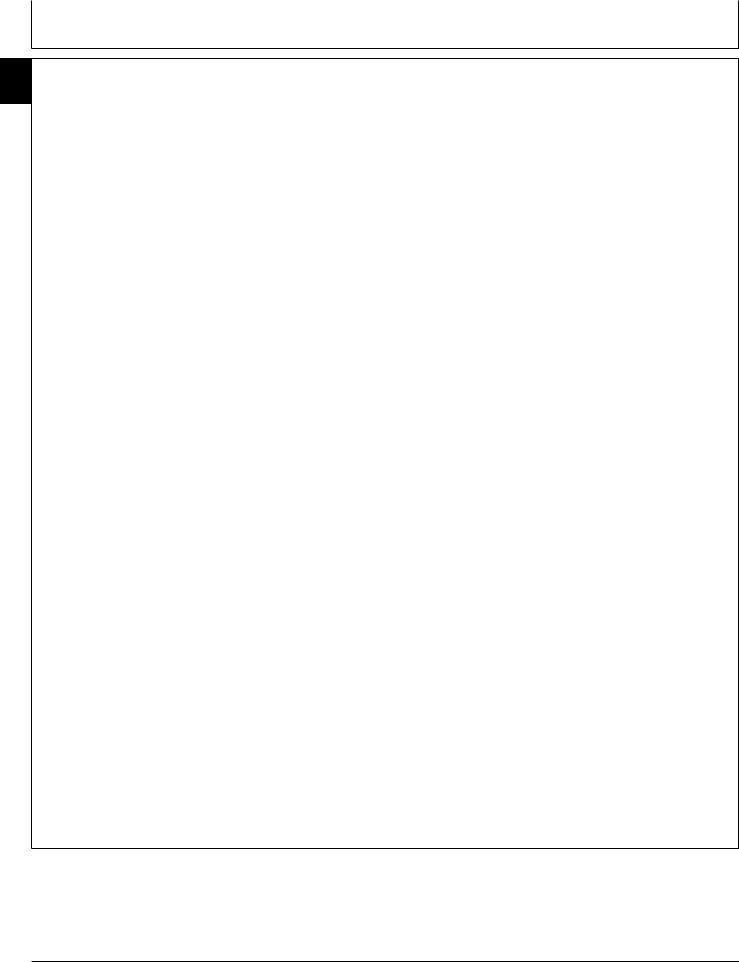
Engine Identification
01
001
4
Engine Application Charts
|
|
JOHN DEERE AGRICULTURAL EQUIPMENT |
Machine Model |
Engine Model |
|
Waterloo - Tractors |
|
|
7220 |
Tractor |
PE6068HRW61 |
7320 |
Tractor |
PE6068HRW61 |
7420 |
Tractor |
PE6068HRW62 |
7520 |
Tractor |
PE6068HRW62 |
7720 |
Tractor |
|
7820 |
Tractor |
PE6068HRW54 |
|
|
PE6068HRW56 |
Mannheim - Tractors |
|
|
6120 |
|
|
6220 |
|
|
6420 |
Tractor Premium (NA/RII) |
CD4045HL473 |
64XX Tractor Premium (RII) IVT, 40K/50K |
CD4045HL474 |
|
6520 |
Tractor Premium (NA/RII) |
CD6068HL470 |
6520L Tractor Premium (NA) |
CD4045HL475 |
|
6620 |
Tractor Premium (NA/RII) |
CD6068HL471 |
6820 |
Tractor Premium (RII) |
CD6068HL472 |
6920 |
Tractor Premium (RII) |
CD6068HL473 |
69XX Tractor Premium (RII) IVT, 40K/50K |
CD6068HL474 |
|
Moline - Combines |
|
|
9550LP Combine |
T06068HH054 |
|
9550HP Combine |
T06068HH055 |
|
9965 |
Amadas Peanut Combine |
PE6068HH057 |
Zweibrucken - Combines |
|
|
9560/9560HM Combine |
CD6068HZ070 |
|
|
JOHN DEERE CONSTRUCTION AND FORESTRY EQUIPMENT |
|
Machine Model |
Engine Model |
|
Davenport |
|
|
624 Loader |
PE6068HDW57 |
|
670 Motor Grader |
PE6068HDW61 |
|
672 Motor Grader |
PE6068HDW61 |
|
JOHN DEERE OEM (OUTSIDE EQUIPMENT MANUFACTURERS)
PE4045HF475
CD4045HF475
PE6068HF475
CD6068HF475
RG40854,0000009 –19–11APR03–1/1
CTM220 (21JAN04) |
01-001-4 |
4.5 L & 6.8 L Level 11 Electronic Fuel System |
|
|
012104 |
PN=20
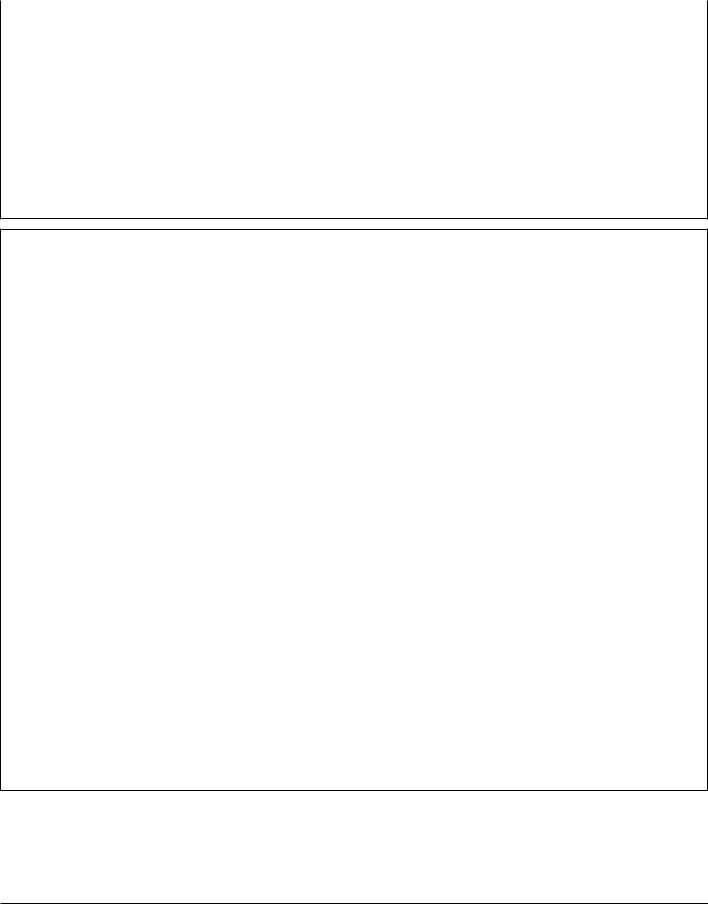
|
Group 002 |
|
|
Fuels, Lubricants, and Coolant |
|
|
|
|
|
|
|
Lubricants and Coolant |
|
01 |
|
002 |
|
|
|
1 |
|
|
|
NOTE: Refer to Section 01, Group 002 of CTM104 Base Engine Manual for information on lubricants and coolants.
RG40854,000000A –19–10APR02–1/1
Diesel Fuel
Consult your local fuel distributor for properties of the diesel fuel available in your area.
In general, diesel fuels are blended to satisfy the low temperature requirements of the geographical area in which they are marketed.
Diesel fuels specified to EN 590 or ASTM D975 are recommended.
Required fuel properties
In all cases, the fuel must meet the following properties:
Cetane number of 45 minimum. Cetane number greater than 50 is preferred, especially for temperatures below -20°C (-4°F) or elevations above 1500 m (5000 ft).
Cold Filter Plugging Point (CFPP) below the expected low temperature OR Cloud Point at least 5°C (9°F) below the expected low temperature.
Fuel lubricity should pass a minimum load level of 3100 grams as measured by ASTM D6078 or, maximum scar diameter of 0.45 mm as measured by ASTM D6079.
Sulfur content:
•Diesel fuel quality and fuel sulfur content must comply with all existing regulations for the area in which the engine operates.
•Sulfur content less than 0.05% (500 ppm) is preferred.
•If diesel fuel with sulfur content greater than 0.05% (500 ppm) is used, crankcse oil service intervals may be affected. (See recommendation for Diesel Engine Oil.)
•DO NOT use diesel fuel with sulfur content greater than 1.0%.
IMPORTANT: DO NOT mix used engine oil or any other type of lubricating oil with diesel fuel.
RG40854,000000B –19–10APR02–1/1
CTM220 (21JAN04) |
01-002-1 |
4.5 L & 6.8 L Level 11 Electronic Fuel System |
|
|
012104 |
PN=21
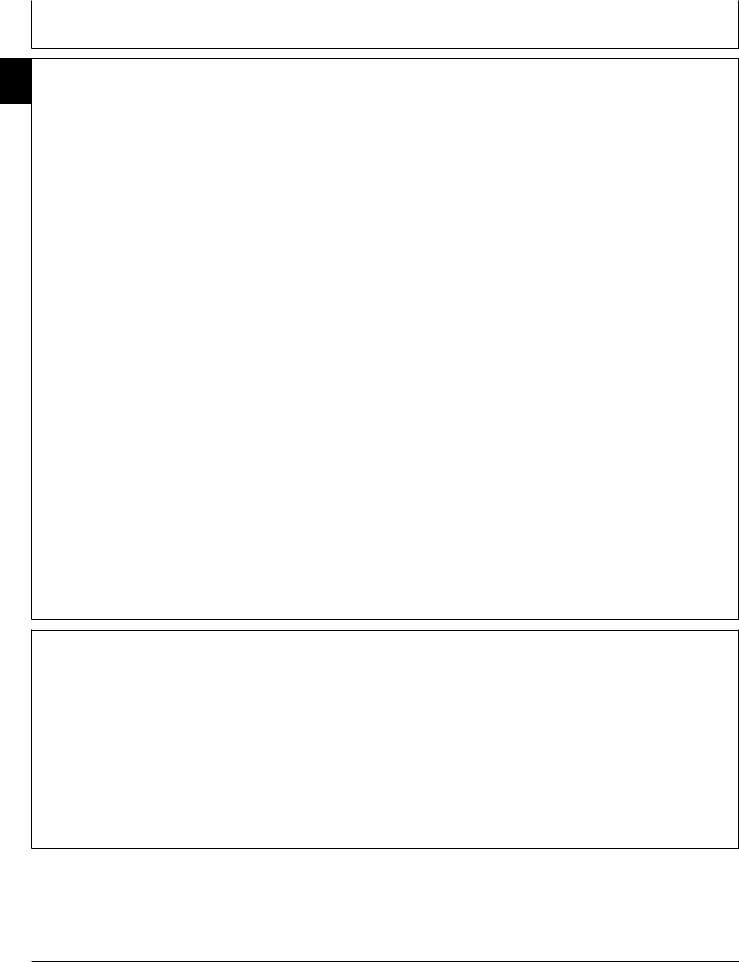
01
002
2
Fuels, Lubricants, and Coolant
Bio-Diesel Fuel
Consult your local fuel distributor for properties of the bio-diesel fuel available in your area.
Bio-diesel fuels may be used ONLY if the bio-diesel fuel properties meet the latest edition of ASTM PS121, DIN 51606 or equivalent specification.
It has been found that bio-diesel fuels may improve lubricity in concentrations up to a 5% blend in petroleum diesel fuel.
When using a blend of bio-diesel fuel, the engine oil level must be checked daily when the air temperature is -10°C (14°F) or lower. If the oil becomes diluted with fuel, shorten oil change intervals accordingly.
IMPORTANT: Raw pressed vegetable oils are NOT acceptable for use for fuel in any concentration in John Deere engines.
These oils do not burn completely, and will cause engine failure by leaving deposits on injectors and in the combustion chamber.
A major environmental benefit of bio-diesel fuel is its ability to biodegrade. This makes proper storage and handling of bio-diesel fuel especially important. Areas of concern include:
•Quality of new fuel
•Water content of the fuel
•Problems due to aging of the fuel
Potential problems resulting from deficiencies in the above areas when using bio-diesel fuel in concentrations above 5% may lead to the following symptoms:
•Power loss and deterioration of performance
•Fuel leakage
•Corrosion of fuel injection equipment
•Coked and/or blocked injector nozzles, resulting in engine misfire
•Filter plugging
•Lacquering and/or seizure of internal components
•Sludge and sediments
•Reduced service life of engine components
RG40854,000000C –19–10APR02–1/1
Dieselscan Fuel Analysis
DIESELSCAN is a John Deere fuel sampling program to help you monitor the quality of your fuel source. It verifies fuel type, cleanliness, water content, suitability for cold weather operation, and if fuel is within ASTM specifications. Check with your John Deere dealer for availability of DIESELSCAN kits.
DIESELSCAN is a trademark of Deere & Company |
DX,FUEL6 –19–06DEC00–1/1 |
CTM220 (21JAN04) |
01-002-2 |
4.5 L & 6.8 L Level 11 Electronic Fuel System |
|
|
012104 |
PN=22
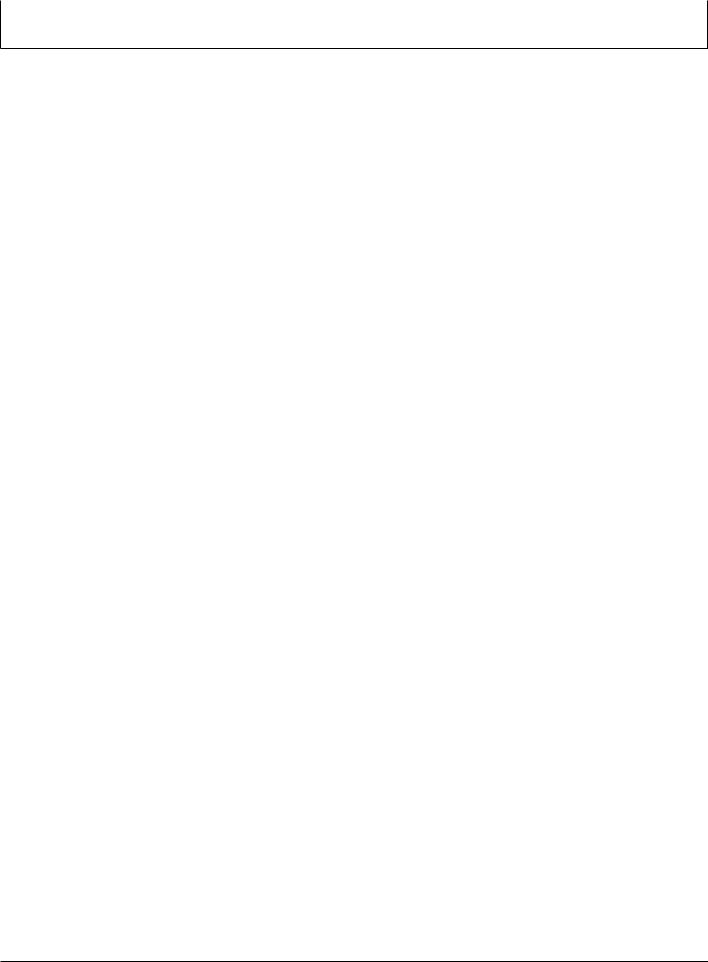
Fuels, Lubricants, and Coolant
Lubricity of Diesel Fuel |
|
01 |
|
002 |
|
|
|
3 |
Diesel fuel must have adequate lubricity to ensure |
Use of low lubricity diesel fuels may also cause |
|
|
||
proper operation and durability of fuel injection system |
accelerated wear, injection nozzle erosion or corrosion, |
|
components. |
engine speed instability, hard starting, low power, and |
|
|
engine smoke. |
|
Diesel fuels for highway use in the United States and |
|
|
Canada require sulfur content less than 0.05% (500 |
Fuel lubricity should pass a minimum load level of |
|
ppm). |
3100 gram as measured by the ASTM D6078 or |
|
|
maximum scar diameter of 0.45 mm as measured by |
|
Diesel fuel in the European Union requires sulfur |
ASTM D6079. |
|
content less than 0.05% (500 ppm). |
|
|
|
ASTM D975 and EN 590 specifications do not require |
|
Experience shows that some low sulfur diesel fuels |
fuels to pass a fuel lubricity test. |
|
may have inadequate lubricity and their use may |
|
|
reduce performance in fuel injection systems due to |
If fuel of low or unknown lubricity is used, add John |
|
inadequate lubrication of injection pump components. |
Deere PREMIUM DIESEL FUEL CONDITIONER (or |
|
The lower concentration of aromatic compounds in |
equivalent) at the specified concentration. |
|
these fuels also adversely affects injection pump seals |
|
|
and may result in leaks. |
|
|
|
RG40854,000000D –19–10APR02–1/1 |
|
CTM220 (21JAN04) |
01-002-3 |
4.5 L & 6.8 L Level 11 Electronic Fuel System |
|
|
012104 |
PN=23
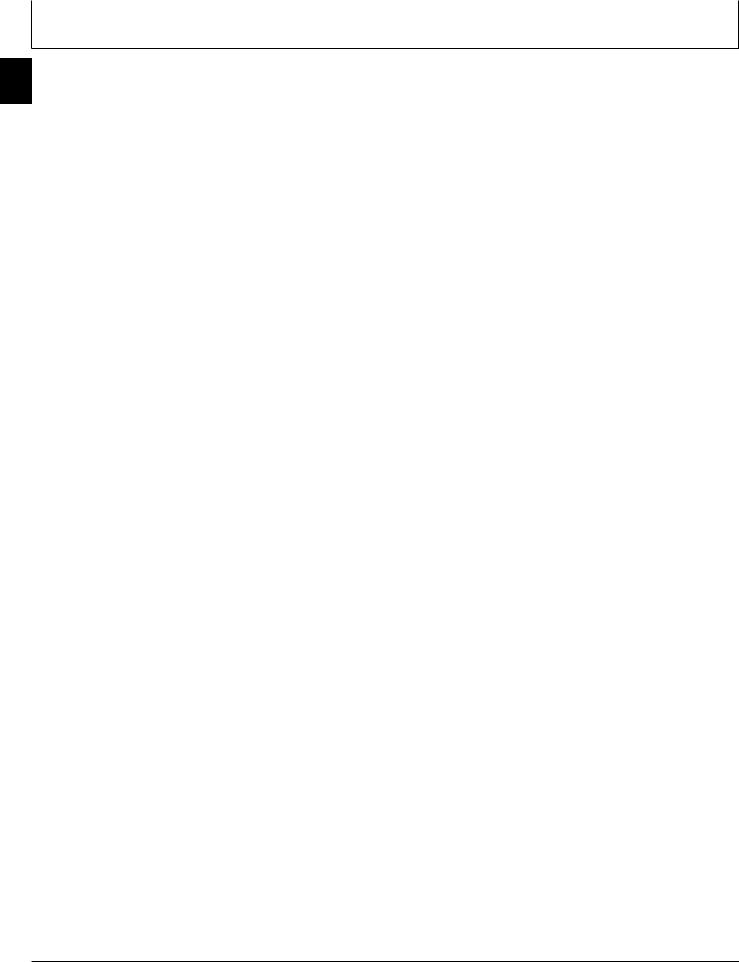
Fuels, Lubricants, and Coolant
01
002
4
CTM220 (21JAN04) |
01-002-4 |
4.5 L & 6.8 L Level 11 Electronic Fuel System |
|
|
012104 |
PN=24
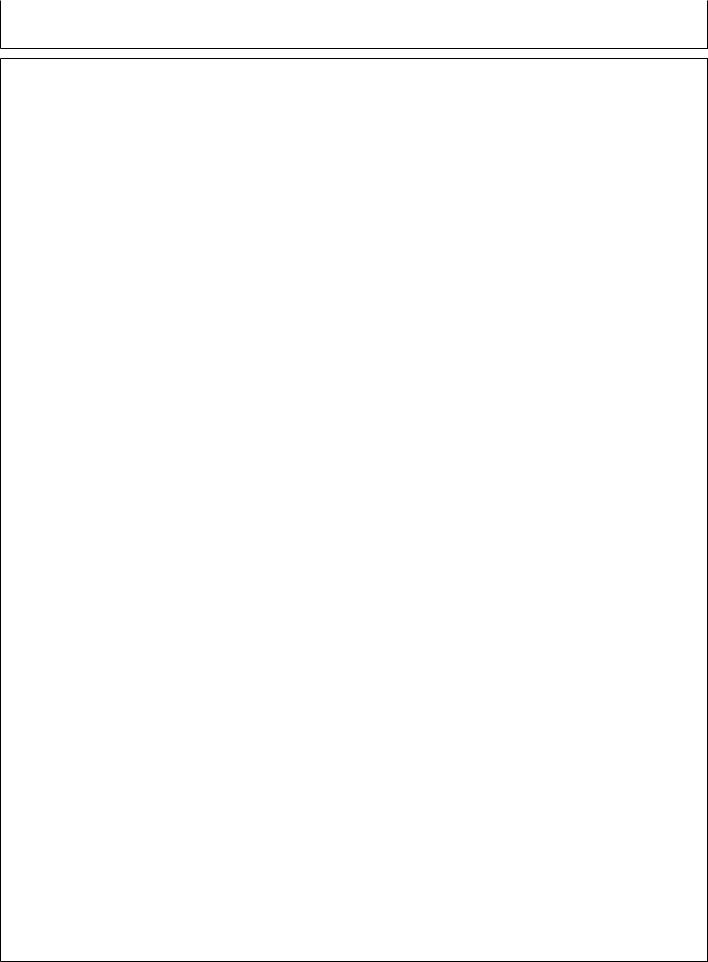
|
|
Section 02 |
||
|
Repair and Adjustments |
|||
|
Contents |
|
|
|
|
|
02 |
||
|
|
|
|
|
|
Page |
|
Page |
|
|
|
|
||
Group 090—Electronic Fuel System Repair and |
Using High-Pressure Washer . . . . . . . . . . . . |
.02-110-9 |
|
|
Adjustments |
|
Repair WEATHERPACK Connector . . . . . . |
02-110-10 |
|
Fuel System - General Information . . . . . . . . |
.02-090-1 |
Remove Blade Terminals from Connector |
|
|
Relieve Fuel System Pressure . . . . . . . . . . . |
.02-090-1 |
Body . . . . . . . . . . . . . . . . . . . . . . . . . . . . . |
02-110-13 |
|
Remove and Install Pre-Filter/Water Bowl |
|
Repair (Pull Type) METRI-PACK |
|
|
Base . . . . . . . . . . . . . . . . . . . . . . . . . . . . . |
.02-090-2 |
Connectors . . . . . . . . . . . . . . . . . . . . . . . . |
02-110-14 |
|
Replace Pre-Filter Element . . . . . . . . . . . . . . |
.02-090-4 |
Repair (Push Type) METRI-PACK |
|
|
Remove and Install Final Fuel Filter/Water |
|
Connectors . . . . . . . . . . . . . . . . . . . . . . . . |
02-110-16 |
|
Bowl Base . . . . . . . . . . . . . . . . . . . . . . . . . |
.02-090-6 |
Repair DEUTSCH Connectors . . . . . . . . . . |
02-110-19 |
|
Replace Final Fuel Filter Element . . . . . . . . . |
.02-090-8 |
Repair AMP Connector . . . . . . . . . . . . . . . . . |
02-110-22 |
|
Remove Fuel Transfer Pump . . . . . . . . . . . . |
.02-090-9 |
Repair SUMITOMO Connectors . . . . . . . . . |
02-110-24 |
|
Install Fuel Transfer Pump . . . . . . . . . . . . . . |
02-090-10 |
Repair YAZAKI Connectors . . . . . . . . . . . . |
02-110-26 |
|
Remove and Install High Pressure Fuel |
|
|
|
|
Pump. . . . . . . . . . . . . . . . . . . . . . . . . . . . . |
02-090-11 |
|
|
|
Remove and Install High Pressure Fuel |
|
|
|
|
Pump Inlet Filter . . . . . . . . . . . . . . . . . . . . |
02-090-13 |
|
|
|
Remove and Install High Pressure |
|
|
|
|
Common Rail. . . . . . . . . . . . . . . . . . . . . . . |
02-090-14 |
|
|
|
Remove and Install Flow Dampers . . . . . . . . |
02-090-16 |
|
|
|
Remove and Install Pressure Limiter. . . . . . . |
02-090-18 |
|
|
|
Remove Electronic Injectors (EIs) . . . . . . . . . |
02-090-20 |
|
|
|
Clean Electronic Injector (EI) Bore . . . . . . . . |
02-090-21 |
|
|
|
Clean Electronic Injector (EI) Orifice . . . . . . . |
02-090-21 |
|
|
|
Clean Electronic Injector (EI) Body . . . . . . . . |
02-090-21 |
|
|
|
Inspect Electronic Injector (EI) Body . . . . . . . |
02-090-21 |
|
|
|
Install Electronic Injectors (EIs) . . . . . . . . . . . |
02-090-22 |
|
|
|
Remove and Install Leak-off Lines . . . . . . . . |
02-090-25 |
|
|
|
Group 110—Electronic Engine Control Repair and Adjustment
Engine Control Unit (ECU) . . . . . . . . . . . . . . .02-110-1 Fuel System Sensors . . . . . . . . . . . . . . . . . . .02-110-2 Remove and Install Engine Coolant
Temperature (ECT) Sensor . . . . . . . . . . . . .02-110-2 Remove and Install Fuel Temperature
Sensor . . . . . . . . . . . . . . . . . . . . . . . . . . . . .02-110-3 Remove and Install Manifold Air Temperature
(MAT) Sensor . . . . . . . . . . . . . . . . . . . . . . .02-110-3 Remove and Install Oil Pressure Sensor . . . . .02-110-4 Remove and Install Fuel Rail Pressure
Sensor . . . . . . . . . . . . . . . . . . . . . . . . . . . . .02-110-5 Remove and Install Crank Position Sensor . . .02-110-6 Remove and Install Pump Position Sensor . . .02-110-6 Remove and Install Glow Plugs. . . . . . . . . . . .02-110-7 Connectors . . . . . . . . . . . . . . . . . . . . . . . . . . .02-110-8 Use Electrical Insulating Compound . . . . . . . .02-110-8
CTM220 (21JAN04) |
02-1 |
4.5 L & 6.8 L Level 11 Electronic Fuel System |
|
|
012104 |
PN=1
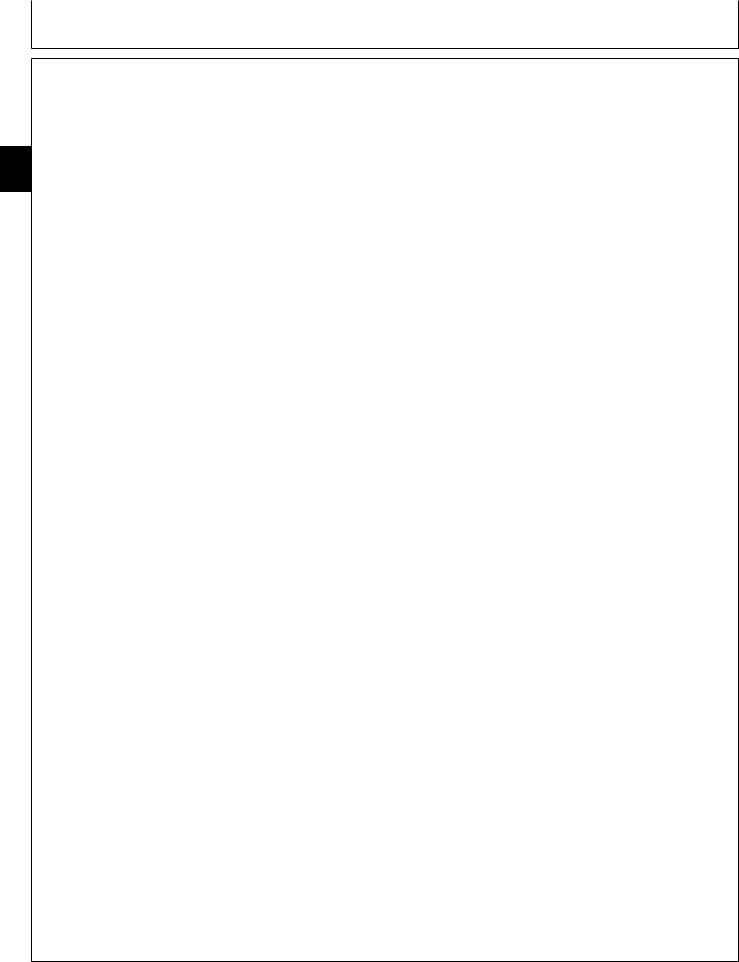
Contents
02
CTM220 (21JAN04) |
02-2 |
4.5 L & 6.8 L Level 11 Electronic Fuel System |
|
|
012104 |
PN=2
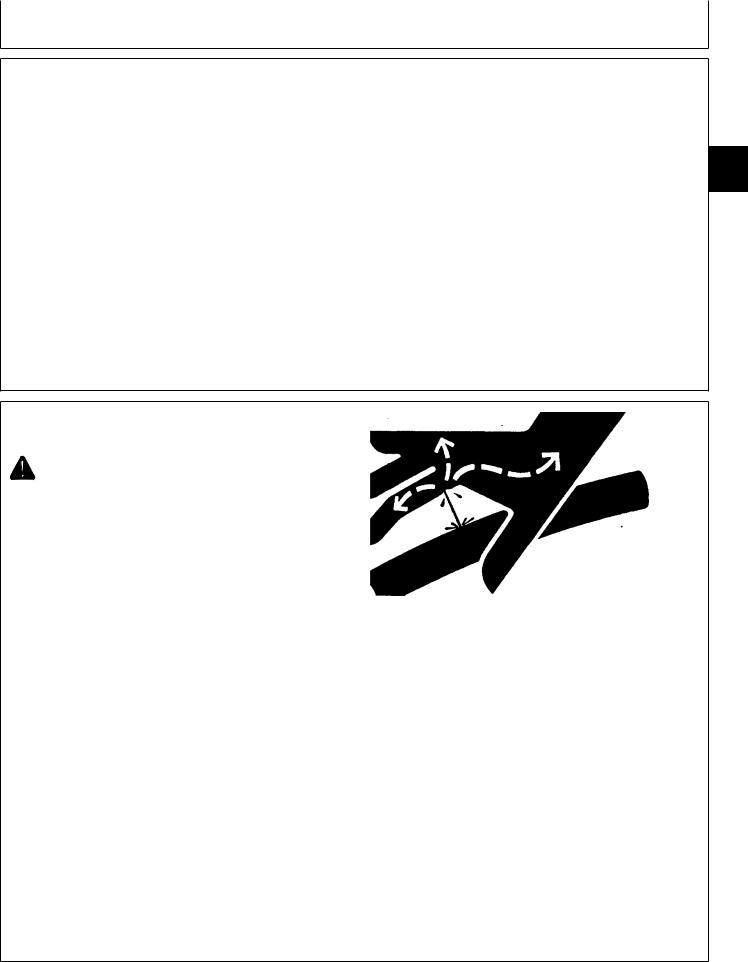
Group 090
Electronic Fuel System Repair and Adjustments
Fuel System - General Information
The Level 11 Engine Control Unit (ECU) is used |
Electronic injectors cannot be tested for opening |
control the the High Pressure Common Rail (HPCR) |
pressure, as they are controlled electronically. |
fuel system. The HPCR fuel system includes the high |
|
pressure fuel pump, high pressure common rail, and |
|
electronic injectors. |
|
The electronic injectors can not be serviced. If any part |
|
of the component fails, the entire injector must be |
|
replaced. |
|
RG40854,000000E –19–10APR02–1/1
02
090
1
Relieve Fuel System Pressure
CAUTION: Escaping diesel fuel under pressure can have sufficient force to penetrate the skin, causing serious injury. Before disconnecting lines, be sure to relieve pressure. Before applying pressure to the system, be sure ALL connections are tight and lines, pipes and hoses are not damaged. Keep hands and body away from pinholes and nozzles which eject fluid under pressure. Use a piece of cardboard or wood, rather than hands, to search for suspected leaks.
If ANY fluid is injected into the skin, it must be surgically removed within a few hours by a doctor familiar with this type injury or gangrene may result. Doctors unfamiliar with this type of injury may call the Deere & Company Medical Department in Moline, Illinois, or other knowledgeable medical source.
Any time the fuel system has been opened up for service (lines disconnected or filters removed), it will be necessary to bleed air from the system. See BLEED THE FUEL SYSTEM in Section 04, Group 150 in this manual.
CTM220 (21JAN04) |
02-090-1 |
X9811 –UN–23AUG88
High Pressure Fluids
RG40854,000000F –19–10APR02–1/1
4.5 L & 6.8 L Level 11 Electronic Fuel System
012104
PN=27
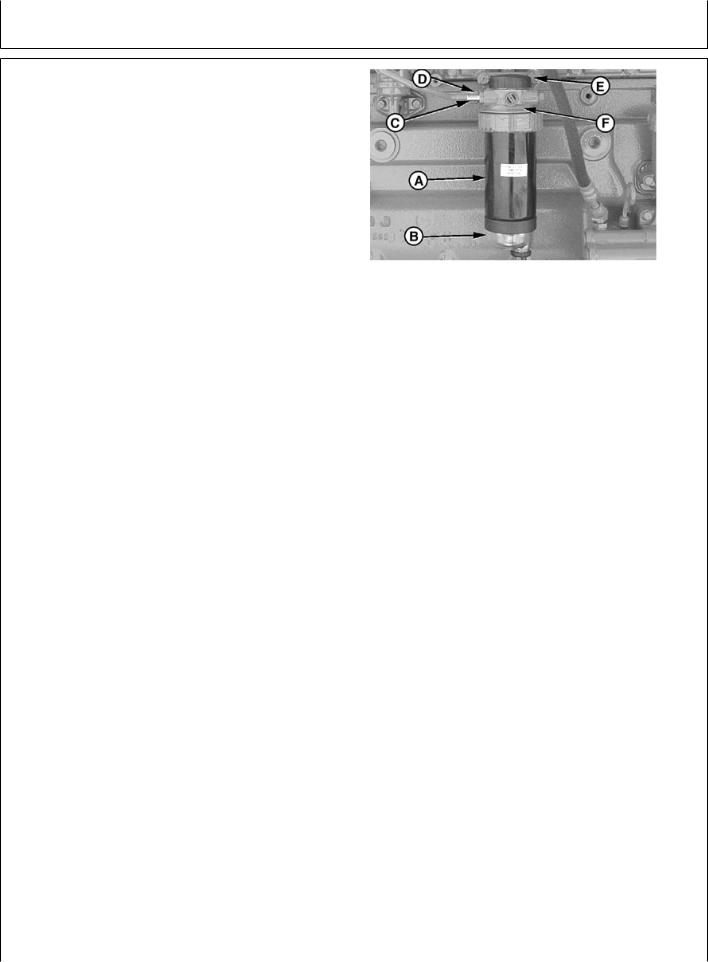
Electronic Fuel System Repair and Adjustments
Remove and Install Pre-Filter/Water Bowl
Base
|
NOTE: For Combine and 6020 Tractors, refer to Vehicle |
||
|
|
manual for pre-filter information. |
|
02 |
|
|
|
|
|
|
|
090 |
NOTE: Water bowl attachments are an optional |
||
2 |
|||
|
|
component for pre-filters. |
|
|
|
|
|
|
1. |
Thoroughly clean pre-filter/water bowl assembly and |
|
|
|
surrounding area to keep from getting dirt and debris |
|
|
|
into fuel system. |
|
|
2. |
Connect a fuel line to filter drain (if equipped) on |
|
|
|
bottom of filter and drain all fuel from the system. |
|
|
3. |
Remove pre-filter element (A) and water bowl (B). |
|
|
NOTE: Fuel lines may be connected to different inlet and |
||
|
|
outlet ports depending on engine application. |
|
|
4. |
Disconnect fuel lines from fuel inlet (C) and fuel outlet |
|
|
|
(D). |
|
|
5. |
If applicable, disconnect fuel transfer pump connector |
|
|
|
and water in fuel sensor connector. |
|
|
6. |
Remove filter base cap screws (E) and pre-filter base |
|
|
|
(F). |
|
|
NOTE: Mounting bracket does not need to be removed. |
||
|
7. |
Replace parts as necessary. |
|
|
NOTE: The specifications below refer to OEM engines |
||
|
|
ONLY. For other applications, see Vehicle Manual |
|
|
|
for pre-filter specifications. |
|
|
8. |
If mounting bracket is removed, install on engine. |
|
|
|
Install filter base on mounting bracket. Tighten cap |
|
|
|
screws to specification. |
|
|
|
Specification |
|
|
Pre-filter Mounting |
|
|
|
Bracket-to-Cylinder Head Cap |
|
|
|
Screws—Torque ........................................................... |
73 N•m (53.8 lb-ft) |
|
|
Pre-filter Fuel Filter |
|
|
|
Base-to-Bracket Cap Screws— |
|
|
|
Torque .......................................................................... |
50 N•m (36.9 lb-ft) |
|
RG12451A –UN–14JUN02
Pre-filter (OEM engines)
A—Pre-filter Element B—Water Bowl C—Fuel Inlet D—Fuel Outlet
E—Pre-filter Base Capscrews (one on opposite side)
F—Pre-filter Base
|
Continued on next page |
RG40854,000010A –19–22MAY02–1/2 |
|
CTM220 (21JAN04) |
02-090-2 |
4.5 L & 6.8 L Level 11 Electronic Fuel System |
|
|
|
|
012104 |
PN=28
